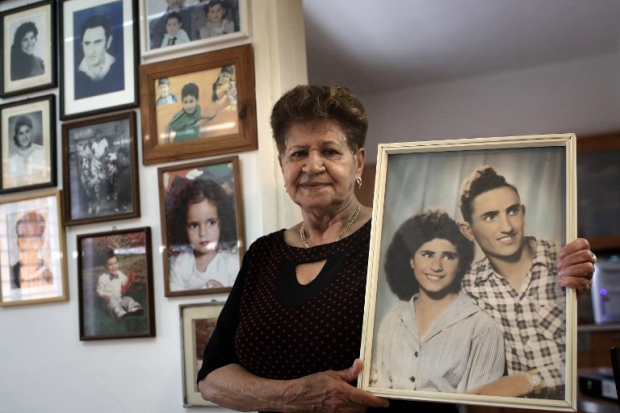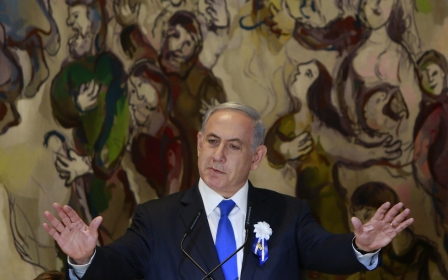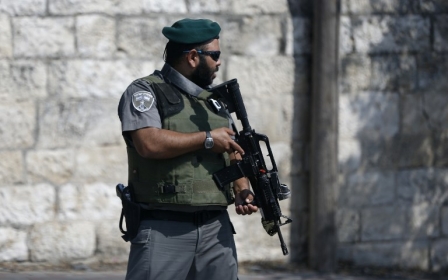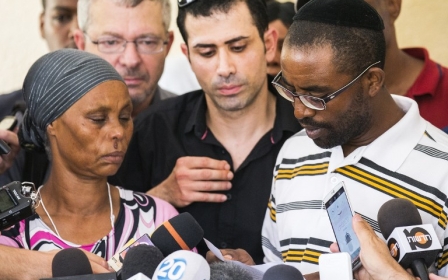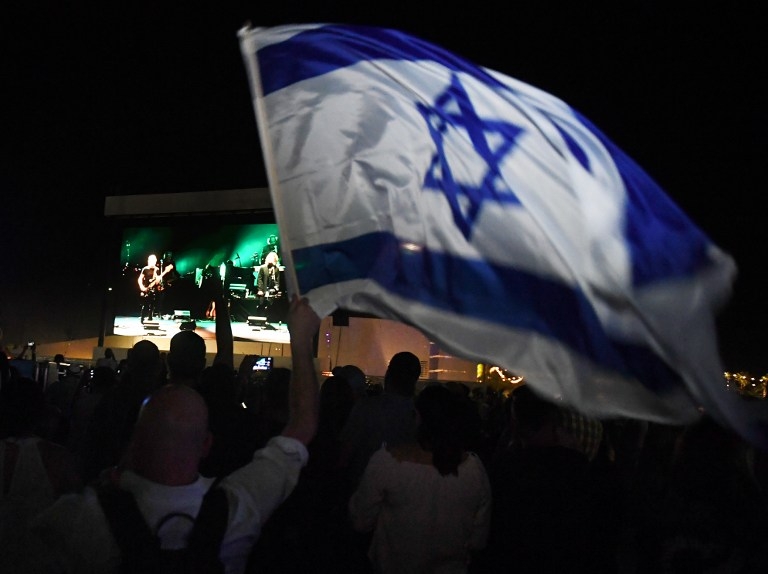
An Israeli Pandora's Box
The Israeli government began by denying that as many as 5,000 Jewish babies mysteriously disappeared in the 1950s. “Nothing ever happened” was followed by “don’t whine about the past.” As the stories refused to go away, the government response then became “we will never know what happened.”
It is referred to as the “Yemenite children’s affair,” in which young Jewish immigrant children, most of them from Yemenite families, disappeared between the years 1948-1954. In most cases the pattern was similar. After sick children and babies were hospitalized, their parents were later told that their children had died. When the devastated parents asked for the body in order to conduct a proper funeral, they were informed that the child had already been buried. Many parents and a growing number of people do not believe that these children died. They insist that the children were abducted and then given away or sold for adoption.
Pressure from parents led three different Israeli governments to conduct investigations. Each one ruled out the possibility that the children were abducted. The last investigative committee heard testimonies not only from parents, but from medical professionals and other civil servants. An extraordinary decision was then taken to conceal these testimonies in archives that would be closed from the public until 2066 – far longer than archives are generally closed.
In June 2016, Prime Minister Benjamin Netanyahu appointed Minister Tzachi Hanegbi to examine these closed archives in order to decide whether they should in fact be opened to the public. On November 13 Netanyahu announced with pathos that: “The topic of the Yemenite children is an open wound. Families whose children disappeared have a right to know what happened.” It was decided to open the archives and protocols of the committees that investigated the disappearance of Jewish children in the 1950’s. The Israel State Archives is scanning the material and over 100,000 documents will soon be accessible to the public. Families who are looking for their relatives will be able to read their files. Anyone who has filed a complaint about missing children between the years 1948-1954 will be able to access the hospital and welfare records. Adoption files and medical files will remain closed and some documents will be redacted for privacy.
At the government meeting Hanegbi said: “The decision today will not make the torment disappear. The suffering was part of the lives of thousands of parents, brothers and sisters... for many decades, many families lived with the feeling that their children disappeared...opening the files will put an end to the suspicion, doubt and mistrust that the families have toward the state”.
This is an important first step. But it is important to examine what was not said in that government meeting. The government has yet to acknowledge the crime and there has been no plea for forgiveness. This is not likely to happen anytime soon since there has been no recognition of any wrong doing. Netanyahu’s declaration that this is an open wound is still in the realm of rhetoric.
The language Hanegbi used is minimalist, not to say problematic. “Many families live with the feeling that their children disappeared.” It is not about the fact that they were abducted and handed out for ‘casual adoption’, rather it is in the realm of feelings.
The past is not in the past
Between 1,000 to 5,000 Jewish babies in Israel disappeared in the 1950’s without an adequate account of their fate. In a TV interview, several years ago, Roja Kushinski, a brave woman working as a nurse in an Israeli hospital in the 50’s, explained the issue quite simply: “People say they died. That is not true. They were given up for adoption."
Many people seem to be convinced that this is a crime without criminals. Yet it is difficult to imagine how an operation of this magnitude could escape the involvement or knowledge of government ministers, bureaucrats, doctors, nurses, social workers, burial authorities, judges, border authorities, policemen and the secret police. All of the governments and relevant social and medical authorities since the 1950s took part in a cover-up. It seems they began with forging documents, hiding archives and intimidating anyone who demanded answers. Judges on the investigative committee wrote that they had a hard time reaching decisions because in some cases hospital documents were missing and burial documents had either disappeared or were fabricated.
Years passed and answers were not given to the families. One might have expected that after the ruling Labor Party fell in 1977, their successors and political rivals would have investigated the case. But their successors continued the culture of silence regarding the affair, suggesting that they too, were in the loop.
The peak of the cover-up was in 1994 when a group of activists, (which the police and media called a cult), led by Rabbi Uzi Meshulam, demanded a government investigation of the kidnapping of children. Meshulam challenged the commonly-used terminology, refusing to refer to what had happened as the "affair of the missing Yemenite children." Instead he referred to it as “the affair of the missing children from Yemen, the Balkans and the East.” This was no small matter. The Yemenite community in Israel was poor and marginalised. According to the committee, two thirds of the 745 families that came forward and demanded their case be investigated were from Yemen. Testimonies that are now being gathered over the past two years by activists show similar ratios. About 70% of the 500 testimonies are of Yemenite Jewish families. But framing it as their problem alone (or even as their "alleged" problem) had ghettoised the affair and helped contain it within a group that was easily labelled as “fantasizing.”
Meshulam's home became the headquarters of the protest. Meshulam and his followers were armed. Police and special forces, claiming that Meshulam's group was dangerous, held the house under siege for 52 days. The siege ended when the police killed one demonstrator and arrested Meshulam who then was sentenced to prison for six and a half years. He was released after five years and passed away in 2013.
Meshulam did succeed in raising awareness of the struggle, leading the state to establish an official investigative committee in 1995. The committee, which completed its work in 2001, found that the children were in fact taken from their parents by force and that they had ‘disappeared from their parents’. However no evidence was found that they were kidnapped or sold.
Despite the apparent lack of any organised crime, most of the testimonies gathered from medical professionals, welfare and other civil servants were among the material in the above-mentioned archive which was to be closed until 2066 but will soon be made public.
Did a mother neglected her child? Did a father?
The most effective mechanism in covering up the affair was to silence the families by framing the parents as hysterical, negligent (they were accused of leaving their babies in hospitals), delusional and primitive. Those who asked too many questions were regarded by the state and the media as dangerous with criminal tendencies.
Without any kind of public or government recognition, each family was left alone with their grief, shame, constant longing and a need for answers. According to over 500 testimonies that were collected independently, most of the families were told that their babies got sick overnight and died. The outcome of the investigation committee that was open to the public reinforced these accounts. The parents were not given a chance to bury their children, as customary in the Jewish religion, nor were they allowed to see the bodies or the grave. They were sent home with what must have been fake death certificates. Eugenie- Genia Mishan, who came from Damascus in 1949, was one of those who shared in her testimony what the medical staff told her after she was informed that her son Rafael had died: “I heard them say- these people from the Orient have many children-anyone who wants can come and take one. They told me that it's not so terrible that he had died, since you are young and can have other children. ..there is no place of burial, nothing. They took him…father went to the archive, there was nothing there, later your uncle found a document which said that Rafael Mishan left”.
Go home, you have many children was a sentence that was cited repeatedly in the parents' testimonies collected over the last two years. They can now be found on a testimonies website. The implication was that having many children must mean that one less would not be missed. In a few cases, when the parents made a scene, yelling and violently insisting upon seeing the body of their baby, the child miraculously came back from the dead, returned to his or her parents without further explanation.
Honouring the grandparents' legacy
Over the last two years, there has been a growing campaign led by the grandchildren of those young mothers and fathers who lost their babies in the 1950s. They are honouring the legacy of those who tried to speak up before them. They are not new immigrants. They are educated and they are angry.
These social activists revived the memory of Rabbi Meshulam. They collected over 500 testimonies, appealed to the high court, lobbied in parliament, conducted public events and they are not likely to stop. It was their pressure that pushed the government to appoint Hanegbi to examine the archives and reevaluate the bizarre and suspicious decision to keep the material concealed from the public until 2066.
There is also a political angle to this government’s sudden interest in exposing the story. The affair is regarded as the responsibility of the old regime, when the Labor party was in power. The truth, however, is a bit more complex. By analysing the testimonies we can learn that the hospitals and children’s institutions that were involved in the disappearances and “adoptions” were affiliated with many Zionist organisations which are still functioning today, including Hadassah, the Women's Zionist Organization of America, Wizo (the Women’s International Zionist organization) along with government and private hospitals. Under every stone that is overturned, the involvement of organizations from both the left and the right are revealed and there is plenty of blame to go around.
Opening the archives is a positive development, but it is only one step on the long road to truth and justice. The files that will be accessible to the public are incomplete. The investigative committee asked very specific questions. It did not examine the parents’ complaints as an indication of a broader and well-organised affair. It proceeded without any kind of suspicion that would drive a commission of inquiry to conduct serious work. Many of the required documents and files never even reached the committee, leaving many questions that have yet to be addressed.
Amram is one of the associations of third generation activists that collect testimonies from families and conduct a broad public campaign to reveal the truth and receive acknowledgment for the crime. Together with Physicians for Human rights (Israel), they believe that the time has come to find the criminals. Turning to the State's legal system, they are now preparing a case for the high court targeting the responsibility of doctors and nurses who might have violated the oaths that they took as medical professionals. Their goal is to achieve state recognition and accountability regarding the tragedy of hundreds of families.
The families have little trust in the authorities to handle the process on their own. The government is trying to overcome this mistrust by co-opting the families. One example of this was when ministers called upon the families to appear for free DNA tests as part of the process of finding their relatives. The company offering the tests is collaborating with the authorities, which raised the families’ suspicion of the possible misuse of test results.
The backlash
One way to measure the progress of the third generation is by examining the reactions awakened as they raise public awareness. For example, more and more people are coming forward with testimonies.
Unfortunately, however, the testimonies until now have only been coming from the side of the victims. Hopefully testimonies will also begin to come from the perpetrators or their descendants.
In August this year the Haaretz newspaper published a big expose’ about family members who claim that some European-Jewish babies were also abducted. The newspaper gave this new development a first-page heading. The families who came forward with their testimonies said that they did so as a result of the public interest in the affair.
The backlash here is that these tragic testimonies are used to refute the charge that racism was involved in tearing babies from their mothers’ arms. If white babies were also taken, that must mean that it was not a matter of racism. Just the same, as mentioned above, most of the missing children came from Yemenite families and of the 500 testimonies that were collected until now, only four percent were from European Jewish families.
When Israelis react to the affair today they are more likely than before to believe that it actually happened and to be shocked and horrified that babies disappeared, probably for profit. But any suggestion that the affair was racist is still met with resistance.
In the latest reawakening of the discussion on the affair, I recognized an additional tactic which appears to be an attempt to defuse the tension by looking at a broader context. Some journalists who wrote about the developments of the affair this year, exposed the public to descriptions of similar practices in Australia, Canada and England at about the same time. This was more to put the affair into context and frame it as normal, and less about exposing racist practices. Perhaps the comparison with these “enlightened” societies should make Israel proud to be in such good company.
The most horrifying aspect of this affair is the abduction of the children. However, on top of that there are additional layers of pain: the pain of not knowing what happened to the children, the possibility that people who know they were adopted believed that their biological parents neglected them, the feeling of betrayal that comes from being lied to by the authorities and years of dealing with the state’s mechanism of blaming the victims.
The civil society associations that are active in exposing the affair demand recognition and forgiveness. They do not need the files. They believe the families. Five hundred testimonies are proof enough. The government is on the right track, but their message is cautious. They may still be trying to bury the affair and put the struggle to sleep.
Earlier this summer, while going through the files, Hanegbi confirmed that babies were definitely stolen in an organised manner, but he said that we will never know if the authorities were involved or if they even knew about it. We have to wonder how difficult it can really be for the government to find these answers. When the government promises that it will do all it can to find a missing citizen, be it a soldier in the field or a traveler lost in the Himalayas, it commonly declares that “we will leave no stone unturned”. For some reason, in the case of the abducted children, they now say, “we will never know.” Under the surface of the progress that has been made, we must still ask if we are looking at a new form of cover-up.
- Michal Zak is a political educator, expert in Jewish-Palestinian dialogue and a resident of the Palestinian–Jewish community of Wahat al Salam-Neve Shalom in Israel.
The views expressed in this article belong to the author and do not necessarily reflect the editorial policy of Middle East Eye.
Photo: An Israeli flag waving in protest against anti-semite political beliefs during a Roger Waters performance on 9 October (AFP).
This article is available in French on Middle East Eye French edition.
New MEE newsletter: Jerusalem Dispatch
Sign up to get the latest insights and analysis on Israel-Palestine, alongside Turkey Unpacked and other MEE newsletters
Middle East Eye delivers independent and unrivalled coverage and analysis of the Middle East, North Africa and beyond. To learn more about republishing this content and the associated fees, please fill out this form. More about MEE can be found here.


